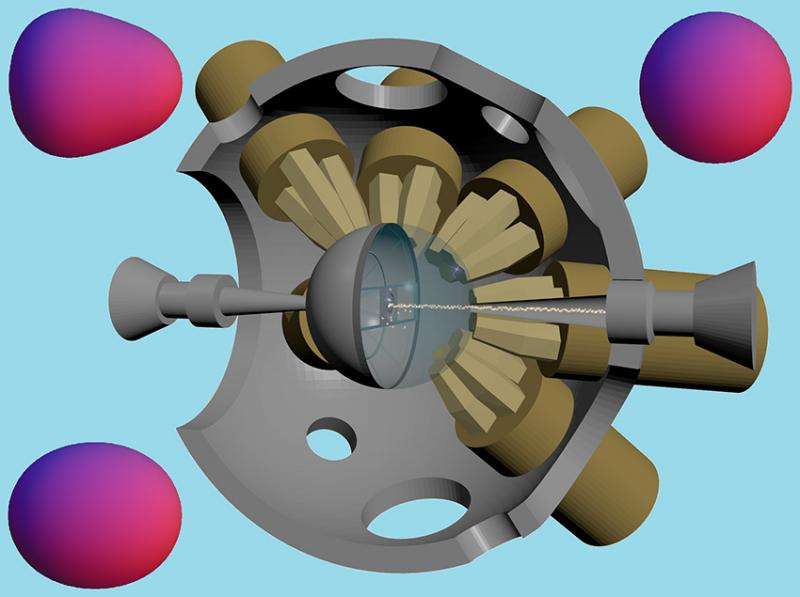Heavy barium nuclei prefer a pear shape

Certain heavy barium nuclei have long been predicted to exhibit pear-like shapes. However, until recently, experimental confirmation had been impossible to achieve as these nuclei typically only live for a few seconds. The existence of this exotic shape has now been demonstrated by taking advantage of breakthroughs in both the acceleration of radioactive beams and new detector technologies.
This experiment demonstrates a significant advancement in radioactive ion beam capabilities through the successful post-acceleration of fission fragments extracted from an intense californium fission source. It also contributes to scarce data on exotic modes of excitation in nuclei that are important for deciphering the fundamental forces at work inside the atomic nucleus.
For decades, nuclear theorists have predicted that the neutron-rich barium isotopes near mass number 144 are centered in one of only two or three regions on the periodic table where nuclei may actually exhibit pear-like, or more generally, reflection-asymmetric shapes in their ground states. However, experimental verification of this property in barium nuclei was long considered to be impossible due to the short-lived nature of these isotopes, typically decaying away in seconds or less. But now, a state-of-the-art experiment at Argonne National Laboratory by a team of scientists from the US, UK, and France has finally provided the first direct measurement of the shapes of these nuclei, lending support to the theoretical predictions of decades ago. To carry out this challenging measurement, researchers created a beam of radioactive barium ions collected from fission fragments of californium nuclei (CARIBU source) and accelerated it (ATLAS accelerator) to an energy carefully tuned to study nuclear excitations via electromagnetic interactions in the bombardment of a lead target. A new generation of gamma-ray tracking detectors was employed along with a matching pixelated avalanche charged-particle detector to study the radiation from the excited nuclei. The data provided insight into the nuclear structure of barium isotopes.
The results indicate that these nuclei exhibit a pear shape even more sizeable than originally predicted by theory.
More information: B. Bucher et al. Direct Evidence of Octupole Deformation in Neutron-Rich, Physical Review Letters (2016). DOI: 10.1103/PhysRevLett.116.112503
Journal information: Physical Review Letters
Provided by US Department of Energy



















